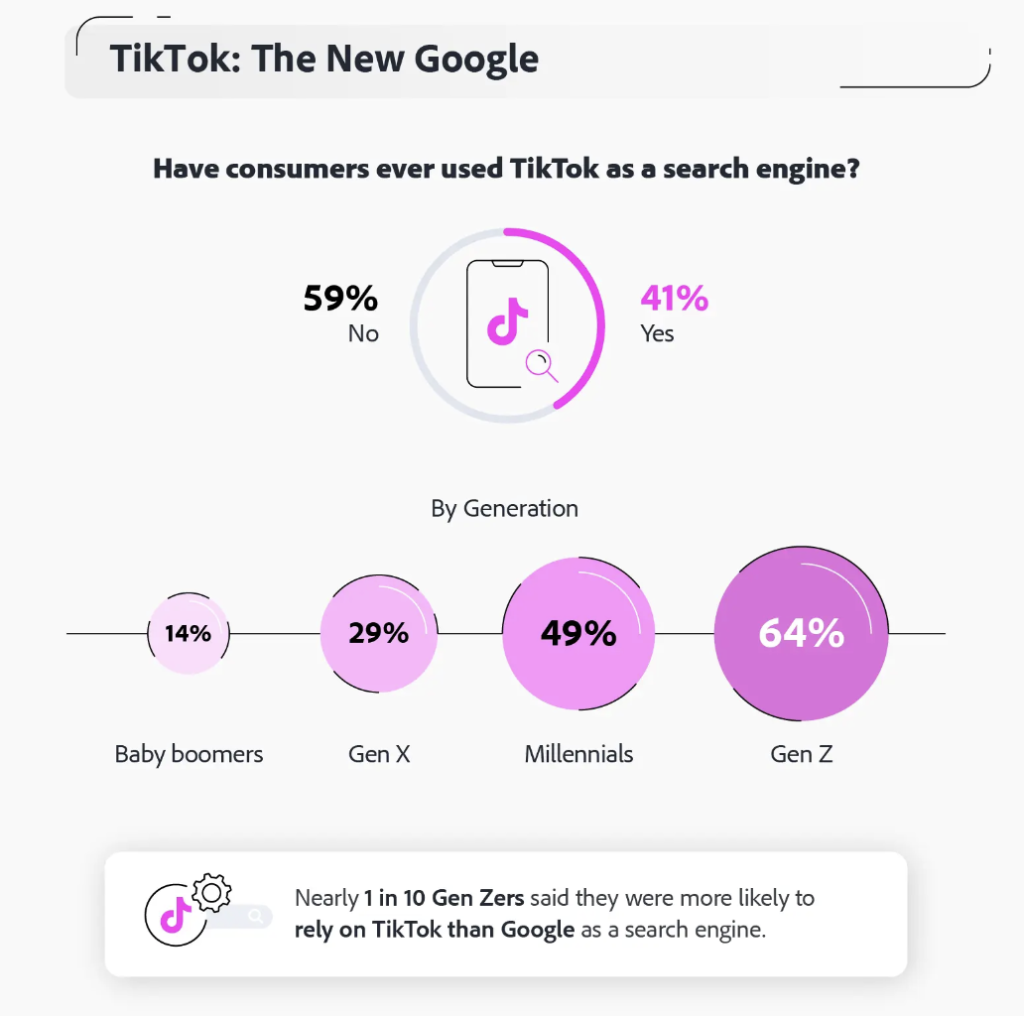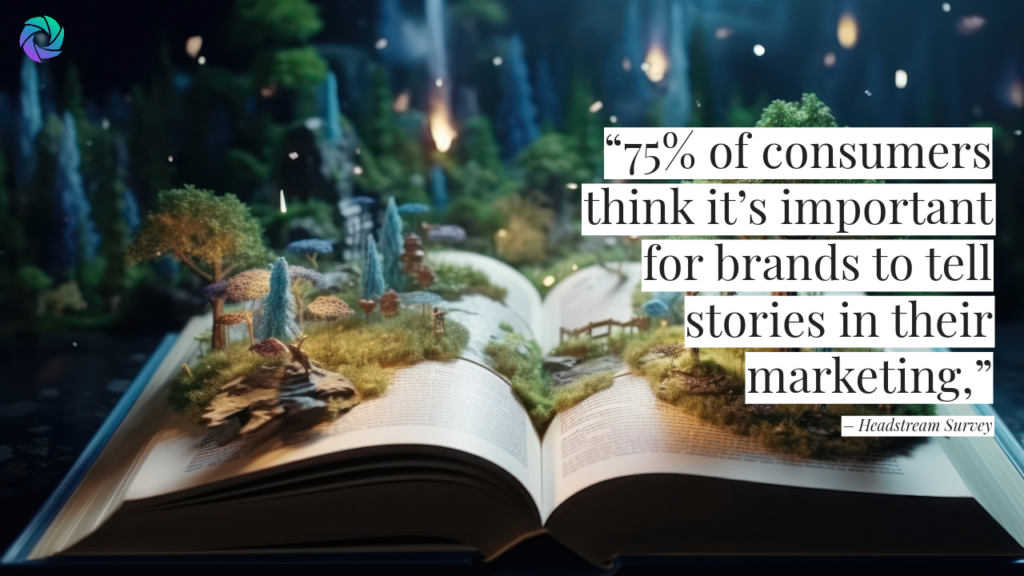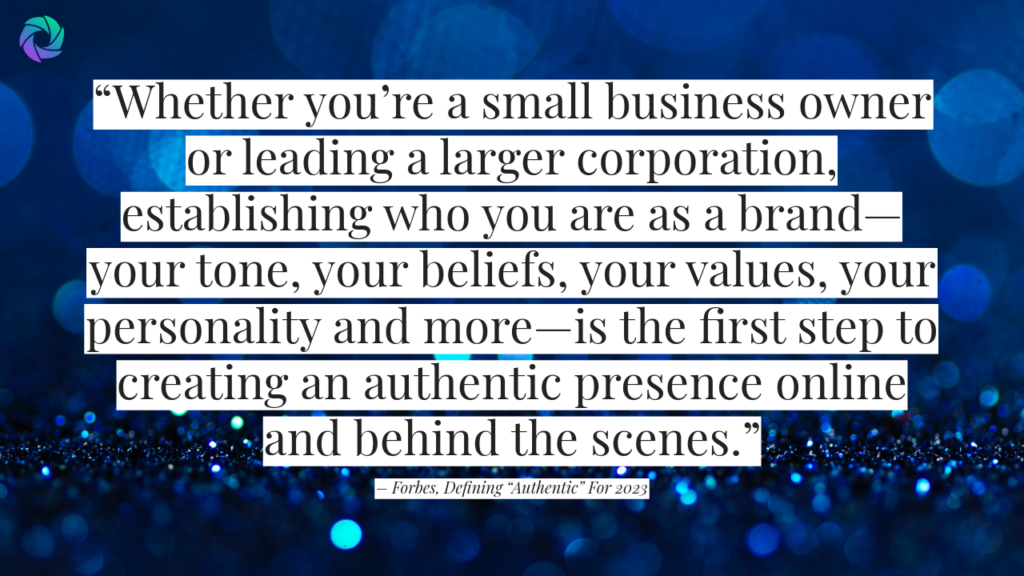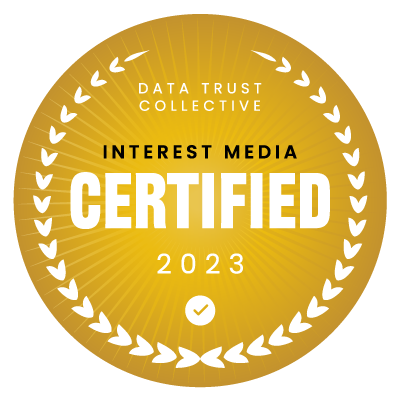
Types of Content to Create for Marketing Success
- Discover what the key trends are in content marketing and creation for 2024.
- Learn why optimizing your website for voice search is crucial and what you’ll need to do to adjust your content accordingly.
- A data-driven content strategy is a must in 2024 and Interest Media can help Advertisers and Publishers with an omnichannel solution.
Content Trends in 2024: What to Create for Content Marketing Success
The combination of changing consumer behaviors and technological advances is reshaping the content marketing landscape for 2024.
The focus of marketing for the foreseeable future is on connecting with your audience in more meaningful ways. While it’s important to be relevant, what’s more important is to earn the respect and trust of your audience. This is achieved through transparency and authenticity, as well as through the positive reinforcement of influencers and audience peers. Another crucial factor is that brands and companies must demonstrate both corporate social responsibility and sustainable practices.
Now let’s look at some of the trends that are anticipated to dominate marketing in 2024 and to consider when creating content.
Table of Contents
1. Interactive content
2. Short-form video and audio content
3. Local and niche content
4. Storytelling
5. Influencers and content collaborators
6. Authentic content
7. Social responsibility and sustainability
8. Optimizing your website for voice search
9. Data-driven content strategy
10. Omnichannel marketing
11. Omnichannel solutions from Interest Media
1. Interactive content
Most predictions see interactive content becoming more prevalent in 2024. Interactive content may consist of quizzes, polls, gamification, virtual reality experiences, live social media events, and more.
There are many benefits for marketers who create interactive content with the foremost being able to garner valuable insights into consumer behavior.
Secondly, interactive content provides a natural way for companies and brands to forge stronger relationships with their audience. Live sessions allow for real-time engagement. Companies can have conversations such as Q&A and in-depth discussions. Live events also provide a format for live product demonstrations. Companies can also use this as an opportunity to improve business decision-making processes through client feedback.
Limited time events can create a sense of urgency which encourages immediate engagement and may also boost sales.
2. Short-form video and audio content
“By 2022, 82% of all internet traffic will be video.”
According to Top Rank Blog, the above statistic has proven true.
Short-form video content already reigns supreme. The growth of platforms that use short-form videos such as TikTok, in particular, and Instagram, as well as YouTube and Facebook’s attempts to mimic the success of those formats, speaks to audience demand.
The dominant forces of video and audio cannot be ignored. They can be used in numerous ways. Foremost, your video and audio should always seek to inform and entertain. Your video should always align with your target audience’s needs and interests.
Secondly, you also must optimize your video and audio content for SEO, as well as voice search. Most importantly, optimize your video for mobile.
Micro-moments
Another important type of content is predicted to be “micro-moments.” This is content consumers can turn to for a quick answer or solution. However, while these should be short and sweet, they should also be attention-grabbing and aim to drive conversions.
Social media search replacing traditional search
“40% of consumers now use TikTok to search,” – Adobe
Audiences are increasingly turning to TikTok and other social media platforms for product discovery, information, recommendations, and purchases. TikTok is now, technically, the 4th most-used “search engine” in the world.
Among Gen-Z, 64% have used TikTok as a search engine, and nearly 1 and 10 are more likely to rely on TikTok than Google as a search engine.
Therefore, you may want to optimize your short-form videos to be picked up in searches performed within a particular social media platform, rather than Google. Keep in mind what ranks in Google may not translate to a particular social media platform. Experiment with what works for the venue in which you want to be found.
3. Local and niche content
A greater emphasis on voice search is likely to help give local content a boost. Likewise, in an increasingly crowded Internet space, content specifically catering to niche audience segments can help websites stand out and be more relevant.
Niche and local content could focus on specific market segments, regional audiences, particular industries, and more.
To be successful in creating local and niche content, like anything in marketing, it is crucial to know your audience. The better you can understand their unique challenges and cultural nuances, as well as personalize the content, the more likely you are to build a connection.
Local and niche content requires precise targeting and SEO. Try to create specific content that features region-specific images, infographics, videos, white papers, case studies, social media, and more.
Your content should strive to establish your company or brand as a thought leader whether locally or in your niche.
4. Storytelling
Storytelling is also important for content marketing in 2024. The format of storytelling is one of the best vehicles for showing the personal side of your company or brand. Storytelling delivers a personal approach to your audience and can make your brand seem less “corporate” and more human. It presents the opportunity to showcase your brand’s authenticity and transparency while forging an emotional connection with your audience.
As humans, we are hard-wired for story. It’s how knowledge has been passed down from time immemorial. Make your brand relatable by sharing experiences. Story is a powerful tool for making human connections, and passing along messages that resonate. Storytelling is likely to become a cornerstone of effective marketing.
5. Influencers, nano-influencers, micro-influencers, and content collaborators
“Micro-influencers can generate up to 60% more engagement than macro-influencers,” – HubSpot
You can be the most authentic, transparent, relatable, and socially responsible company out there – and that still may not be enough to reach all the consumers you want to connect with.
To reach those hard-to-connect-with audiences, you’re going to need to work with influencers, nano-influencers, micro-influencers, and content collaborators. Essentially, these groups have developed a tight closeness and bond of trust with their audiences that can bring them to your brand. Their audiences may be smaller in scale but are more highly engaged.
The good news is that collaborating with smaller influencers and content creators could result in a greater ROI since they are less expensive and more cost-effective than the most popular influencers.
Social media influencers and audience sizes are defined as:
- Mega-Influencer: 1 Million+
- Macro-Influencer: 100,000 – 1 Million
- Micro-Influencer: 1,000 – 100,000
- Nano-Influencer: Less than 1,000
6. Authentic content
No one likes to be sold. Audiences are getting smarter, particularly younger audiences who grew up in the digital realm and have a built-in BS detector. Today’s audiences are looking for content that is genuinely helpful and was created to do so – not solely to sell.
Your content needs to start from the point of being helpful. From there, you can create a better bond with your audiences by sharing genuine experiences and stories. Speaking as someone standing in their shoes, having empathy for their problems. Be transparent and bring them into your world by showing them behind-the-scenes insights.
Through the use of authentic content, you can make your brand or company more relatable to your audience, and break down the barrier that may separate you. By consistently being helpful, honest, and reliable, you will gain your audience’s trust and foster long-term loyalty.
7. Social responsibility and sustainability
Today’s audiences are putting brands and companies under a microscope, so to speak. They are taking a closer look at what companies do in the world. Do they make great products but create pollution or decimate ecosystems in the process? Are their workers in a foreign country and working in harsh conditions that amount to a sweatshop?
People today are holding companies much more responsible than ever before. In the information age, all news travels fast. It’s very easy to spread the word about a company that is environmentally irresponsible or has practices that are harmful and not sustainable. Consumers will move on to a competitor.
Being socially responsible and engaging in sustainable practices are also hard to fake. People will find out. Therefore, these are no longer optional marketing tactics but a crucial component of any strong company or brand identity.
8. Optimizing your website for voice search: Why it’s crucial and what to do
“About 40% of US Internet users use a voice assistant at least monthly,” –eMarketer
As the above statistic shows, voice marketing is more than a trend – it’s becoming the norm. The figures above show that smartphones and smart speakers are currently the leading devices used for voice search. The number of smart speakers in the US alone was expected to surpass 200 million by 2023.
Voice search optimization is one item that can be found in every list touting emerging trends in marketing for 2024. Google and all of the search engines are prioritizing voice search, as well as all the AI-enabled assistants demanded. Plus, new generations of smart devices powered by AI that are emerging may even change the paradigm of the smartphone. New devices have been developed that are driven by AI and voice rather than manual input or apps.
Therefore, content creators will have to think differently when it comes to creating their content. While a lot of content has been keyword-driven, now content creators will have to think about natural language and conversational keywords. There will also be a focus on longtail keywords.
Think like a “voice searcher”
Someone searching for plumbing supplies might ask: “Where can I find plumbing supplies near me?” or “Where can I find plumbing supplies in Clarksville?”
As is obvious, not only do you need to optimize for the type of language someone might use to find something – but local search optimization is also crucial.
Another important consideration is when, where, and how voice search is used. For example, someone using voice search at home is likely to make different search queries than someone using voice search on their phone while walking.
Because Google is optimizing and emphasizing voice search, also doing so for your website is likely to help your site’s SEO and ranking.
However, it’s also important to not throw out the baby with the bathwater as you focus on voice search optimization. The top priority with content remains that of creating high-quality information that delivers value to your audience.
Lastly, in addition to optimizing for voice search, webmasters will still have to ensure that their website is mobile-friendly and fast-loading.
9. A data-driven content strategy is a must in 2024
The marriage of highly-targeted content with a data-driven marketing strategy will be crucial in 2024 and beyond. Considering an increase in voice search, SEO strategies must align with search intent.
Consumers expect personalized content and this is only possible through the integration of data analytics. Personalized content is relevant content. This must be developed using a consumer-first approach.
Data analytics will also be crucial for targeting and retargeting your ideal customer.
Artificial intelligence (AI) will also play a vital role. AI will help marketers analyze huge amounts of data, as well as make informed decisions, and automate tedious tasks.
10. Omnichannel marketing:
“Using three channels instead of one for a marketing campaign results in a 287% higher purchase rate.” – Omnisend
The need to deliver personalized content to consumers and reach them across multiple devices or touchpoints in a seamless shopping experience has made omnichannel marketing a crucial part of any marketing strategy.
It is achieved through a data-driven approach that delivers visibility, measurement, personalization, optimization, and automation.
An omnichannel marketing solution utilizes a consumer-centric approach. It must consider the entire customer experience, delivering the appropriate content at the right moment and in the right context.
Why should you consider an omnichannel marketing solution?
- Consistent messaging across all marketing channels.
- Customer-centric marketing that reflects the interactions of the audience with any channel.
- Personalization across all channels at every stage of the buyer journey.
- A reliance on data, analytics, and automation.
Omnichannel benefits for customers:
- Relevant messages in the right context at the right time.
- Personalization that considers a customer’s needs, wants, browsing history, and purchase history.
- Messages consistent across devices and platforms.
- Loyalty programs, rewards, and special articles tailored to the customer.
- Ability to interact with the company or brand.
Omnichannel benefits for companies:
- Focus on your brand, not the channel.
- Purchases can occur on more than one device.
- Integration of in-store and online shopping.
- Increased brand recognition.
- Improved customer loyalty and customer retention.
- Increased sales through retargeting customers.
- Determine your most successful channels and build customer relationships through them.
- Optimize campaigns and maximize budget allocation.
- Determine poorly performing channels and adjust accordingly.
- Better understand your customer journeys.
- Determine the best areas of focus for your team’s time and energy.
Interest Media offers an Audience-Centric, Data-Driven Omnichannel Solution
Interest Media offers a complete omnichannel solution. Deliver your marketing messages across email, display, push, SMS, and more.
With specialized tools that are built for performance, Interest Media delivers thousands of exclusive offers, derived from the internet’s most valuable consumer verticals, to publishers seeking increased earnings.
Interest Media offers a consumer-centric advertising solution that utilizes first-party data combined with real-time optimization that maintains a positive user experience while driving higher earnings.
Deliver an omnichannel marketing solution with Interest Media
Powered by an internally owned and operated network of web properties, leveraging exclusive first-party data, Interest Media puts the biggest brands in front of their ideal consumers with a unique, audience-centric, omnichannel solution.
Advertisers:
Interest Media allows you to create meaningful interactions with actively engaged audiences that have confirmed their intent and fit your precise consumer profile. These authenticated customers have been pre-qualified and are ready to engage with your brand.
Publishers:
Interest Media enables publishers to create powerful and unique ways to introduce their audience to exclusive offers from the brand advertisers who are most likely to induce meaningful action from them, thus creating unparalleled revenue opportunities at an unlimited scale.
















